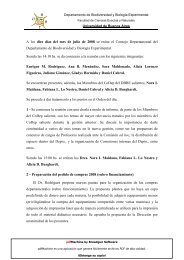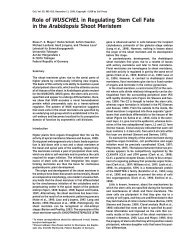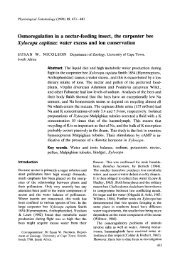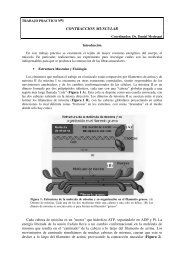The Aerobiology Pathway
The Aerobiology Pathway
The Aerobiology Pathway
Create successful ePaper yourself
Turn your PDF publications into a flip-book with our unique Google optimized e-Paper software.
wering (Spieksma et al., 2003). This can be seen by clear differences in the start of the<br />
grass pollen season throughout the UK (Emberlin et al. 1994), regional variations in<br />
Betula pollen production in the UK (Corden et al., 2000), the grass pollen season in the<br />
UK and Spain (Sánchez Mesa et al., 2003) or distribution of Japanese Cedar pollen production<br />
(Kawashima and Takahashi, 1999)<br />
Pollen production by crops also varies considerably with time of day, stage of flowering<br />
and weather events. Some crops produce large quantities of airborne pollen e.g.<br />
above a sugar beet crop, the maximum daily average concentrations reported was 12400<br />
m -3 , while for oilseed rape it was 5295 m -3 (Scott, 1970). Free et al. (1975) measured<br />
maximum hourly counts at 46714 pollen grains m -3 of air for sugar beet and 2273 m -3<br />
for oilseed rape crops. However, these measurements really include a component of dispersal<br />
with particle numbers decreasing with height above the source.<br />
2.3. Release from lower plants, animals, etc.<br />
Algae and diatoms can become airborne via sea-foam and bursting bubbles<br />
(Schlichting, 1971; 1974) and aerosol formation by waves, rough water (rapids, waterfalls,<br />
etc). In some mosses such as Sphagnum, release of spores is explosive, as drying of<br />
the spore capsule increases the internal air pressure until an operculum in the top of the<br />
capsule ruptures. Similarly spores of many homosporous ferns are released actively following<br />
dehiscence of sporangia which curve back on themselves due to an annulus of<br />
thickened cells, but spring forwards again, releasing spores as water in the annular cells<br />
turns to vapour (Ingold, 1939). In the horsetails (Equisetum, Pl. 7.12) spores are wrapped<br />
by four arms (part of the spore coat), called elaters, which in dry conditions, spring<br />
open to assist spore release.<br />
In the animal world, protozoa, nematodes, mites and small insects can become airborne<br />
by wind action on water, soil, or plants or by mechanical activity (rain-splash,<br />
shaking clothing, etc). A special case is certain spiders, which ‘balloon’ by deliberately<br />
extending relatively long silk filaments to catch on the wind (Weyman et al., 2002).<br />
3. Dispersal<br />
Once particles have been launched into the air they disperse, their concentration per<br />
unit volume of air decreasing with increasing distance from the point of liberation<br />
(Gregory, 1973). This is illustrated by the appearance of smoke billowing from a chimney,<br />
which disperses, often showing effects of air turbulence (Fig. 2.2). Expansion of the<br />
cloud of particles occurs due to eddy currents, causing dilution of the particle cloud as it<br />
moves in the general wind direction.<br />
Dispersal within and above crops is difficult to measure alone as air movement<br />
affects the release, dispersal and deposition of fungal spores (Legg and Bainbridge,<br />
1978; Legg, 1983) and pollen. Gust penetration into crop canopies is important for<br />
liberation and deposition of spores (Aylor et al., 1981; Shaw and McCartney, 1985), an<br />
important consideration in the development of a spore dispersal model (McCartney<br />
18 THE AIR SPORA


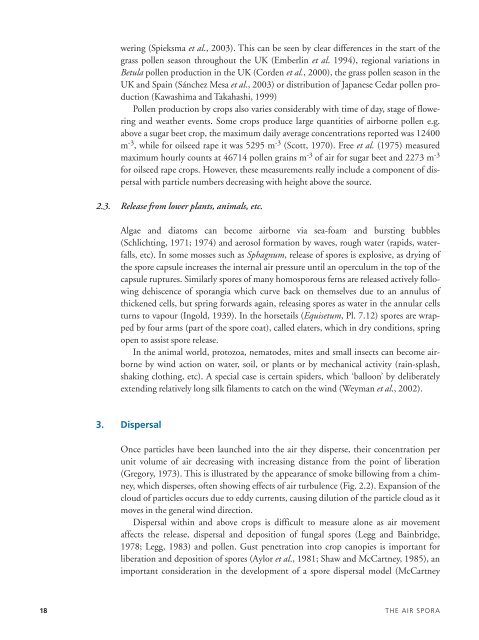

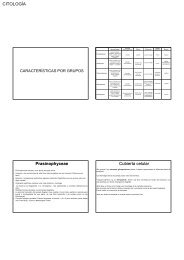


![Estructuras secretoras internas [4.64 MB]](https://img.yumpu.com/14294979/1/190x143/estructuras-secretoras-internas-464-mb.jpg?quality=85)
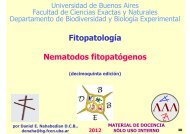
![anatomía y exomorfología [7.14 MB]](https://img.yumpu.com/12744163/1/190x143/anatomia-y-exomorfologia-714-mb.jpg?quality=85)
